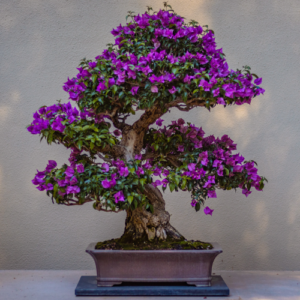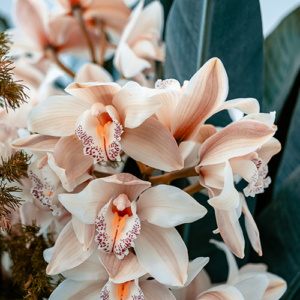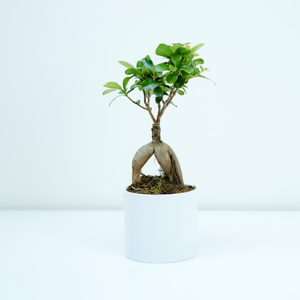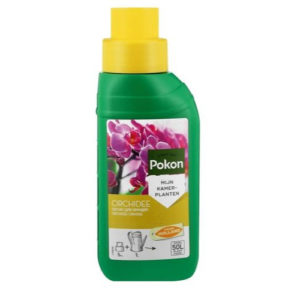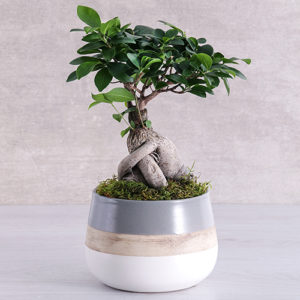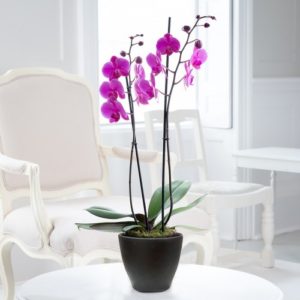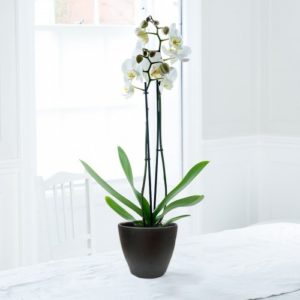ORCHIDS
Care For Your Orchids
Orchids have long been a symbol of love and beauty.
They are easy to grow, but still require basic care and can die if not cared for properly.
Find the right orchid for your home. The proper care of orchids starts with choosing plants that are suited to your particular environment. Consider the orchid’s adaptability, ease of growing, ready availability, and their beautiful flowers. If you do find yourself wanting to extend beyond the easier varieties later, it’s recommended that you do plenty of research into the specific needs of the more delicate and fussy varieties of orchids. Some things to bear in mind when choosing an orchid include:
Will the orchid have enough space when fully grown? Or will it need to be moved somewhere else? Some orchids can be massive when fully grown and are best placed in a greenhouse.
Can you provide the temperature requirements that the orchid needs? Orchids can be divided into three types by temperature requirements––cool, intermediate and warm, meaning that orchids require certain minimum night temperatures in order to grow successfully.
Do you have a greenhouse or conservatory if needed? Many orchids will thrive best in such an environment than simply sitting in the house or on a back porch. If you don’t, prefer the orchids that like being indoors.
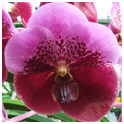
Vanda and Asconcendas
Like bright, humid and intemediate to warm conditions.
Can be grown in pine bark but roots will venture out, need to be encouraged as roots require unimpeded air circulation and must dry out quickly after watering.
Water every day.
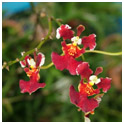
Oncidium
Good light, good air flow, filtered sun.
Temperature – should not go under 7 deg C in winter for any length of time and 29 deg in summer.
Keep plant slightly moist – must NEVER stand in water.
Water less in winter.
Fertilize once a week in summer.
Repot when medium starts to break down or plant too large for pot.
Need plenty of moisture in the air.
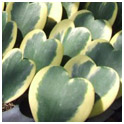
Hoya Leaves
Keep under shade, watering every 3 days.
Give fertilizer from time to time to allow the leaf to grow bigger.
The leaf can live up to 4-5 years.
If you want the leaf to grow to be plant with stem and more leaves, put it under sunlight and give fertilizer every 7 days and also change the growing material from time to time.
The plant can live up to 20-30 years.
The fertilizer can be the same as you use for orchids.
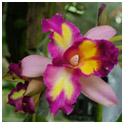
Cattleya
Good light and airflow.
Filtered sunlight for plant to flower – Full sun will burn leaves. Dark green leaves – too much shade.
Must NEVER stand in water.
Keep plant slightly moist.
Water less in winter.
Fertilize once a week in summer – not necessary in winter.
Temperature should not go under 7 deg C in winter for any length of time and over 35 deg C in summer.
Need plenty of moisture – can spray around – near pools of water, etc.
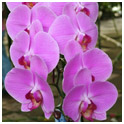
Phalaenopsis
Epiphytes – need warm, humid, damp conditions and will grow and bloom in deep shade.
They are happy indoors and will grow in a range of light conditions and prefer a temperature range that is also pleasant for humans.
Cut off flower spike ONLY after it has died – as long as it is green, there is potential for more flowers.
Can bloom throughout the year, but peak flowering occurs in spring & summer.
Must NEVER stand in water – water when 80% dry and do not water on leaves.
Wipe leaves with damp cloth and remove any water that may fail in centre of leaf joint with tissue.

Dendrobium
Good light and good airflow.
Filtered sun – not direct – leaves burn.
Keep growing medium a bit moist in summer.
Must NEVER stand in water.
Keep in brightest position in winter months to ripen the current years stems (Canes).
Reduce watering drastically in winter – probably once in 2 weeks early in the day.
Fertilize weekly except in winter.
September to March water with half strength high nitrogen feed to boost growth and from March to May, change to half strength high potash feed to ripen the canes.
Temperature minimum 12 deg C and maximum 35 deg C. Need plenty of moisture in the air.
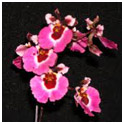
Tolumnia
Like bright ligth and morning sun.
Need daily misting – do not like to be kept moist all the time.
Temperature – Intermediate to warm conditions.
Can be mounted on slender twigs.
Old inflorescences should not be clipped, as often new flowers or even new shoots (kiekies) appear.
Propagation is by division, but separate only mature leaf fans.
Orders are taken for fresh cut Orchid Blooms on Thursday, Fridays and Saturdays. We are open 7 days a week
Did you Know?
We offer a "hospital" for your Orchid, like to know more get in touch . . .
Shop Coming Soon
